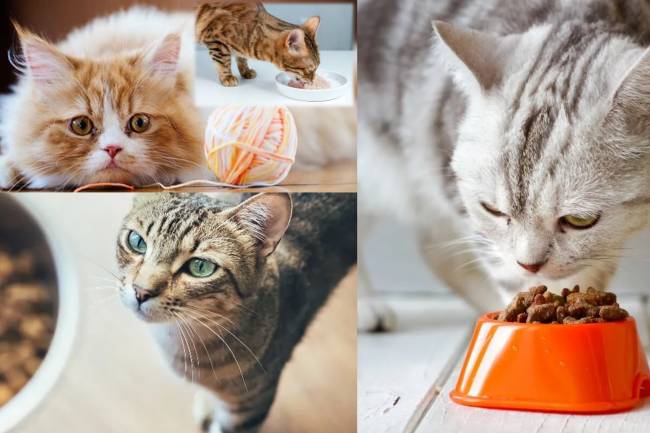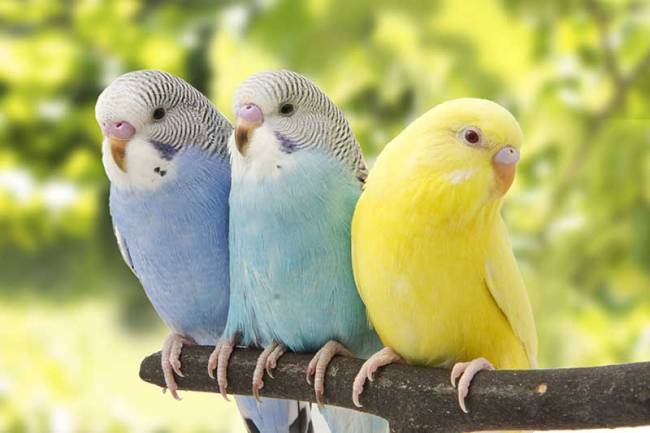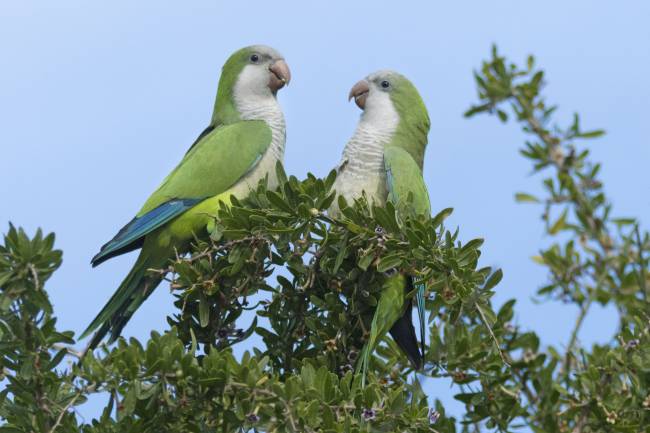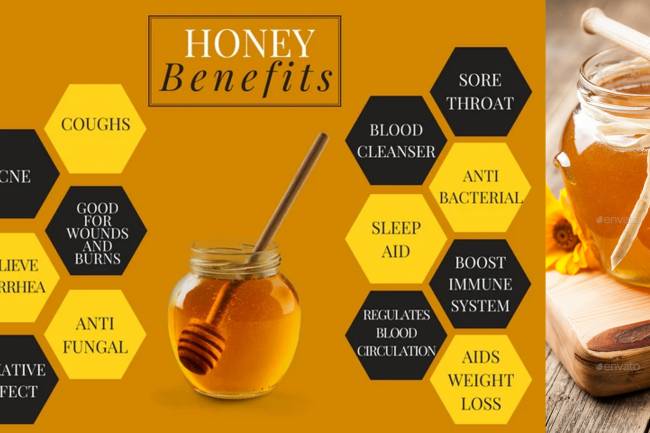Green-Cheeked Conure parrot: popular pet
Green-Cheeked Conure parrot: popular pet
The green-cheeked conure is a popular pet bird known for its playful personality and vibrant colors. Here is some information about them:
Table of Contents
- Detailed Information of green-cheeked conure. 1
- Appearance: 1
- Personality: 2
- Diet: 2
- Toxic To Green-cheeked conures: 3
- Habitat: 4
- Lifespan: 4
- Socialization: 4
- Noise level: 4
- Health Concerns: 4
- How to care , green-cheeked conures: 4
- Legal Considerations: 5
- Breeding’s green-cheeked conure: 5
- Types and colors of Green-cheeked conures parrots: 7
- Pricing: 8
- Buying where?- Green-cheeked conures ?. 8
Detailed Information of green-cheeked conure
Appearance:
Green-cheeked conures are small to medium-sized parrots with mostly green plumage. They have a red spot on their head, blue primary feathers on their wings and a long tail. Their beaks are horn colored and their feet are grey.
Personality:
These birds are known for their charming and sweet nature. They are intelligent and can be trained to imitate movements and sounds. They thrive on interaction and can become quite attached to their human companions.
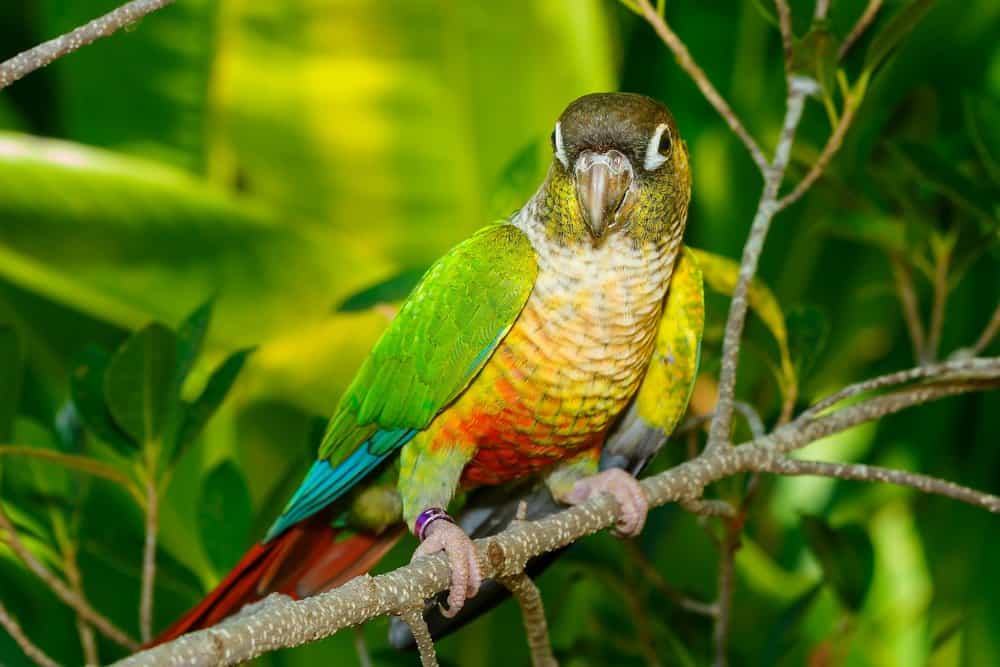
Diet:
In the wild, green-cheeked conures eat a variety of seeds, fruits, nuts, and plants. In captivity, they should be offered a balanced diet that includes high-quality pellets, fresh fruit, vegetables and occasional nuts or seeds.
Providing a balanced diet is vital to the health and well-being of your green cheeks. Here is a breakdown of the proper diet for these parrots:
- Pellets: Make high-quality pellets specially formulated for small to medium-sized parrots a staple of your conure's diet. The tablets provide essential vitamins, minerals and nutrients in a balanced form. Be sure to choose pellets that are free of artificial colors and flavors.

- Fresh Fruits: Offer a variety of fresh fruits such as apples, oranges, grapes, bananas, plums and melons. Fruits provide important vitamins and antioxidants. Remove any seeds or pits from the fruit before feeding them to your conure, as some seeds can be poisonous.
- Fresh vegetables: Add a variety of fresh vegetables to your conure's diet, such as carrots, broccoli, bell peppers, spinach, kale and squash.
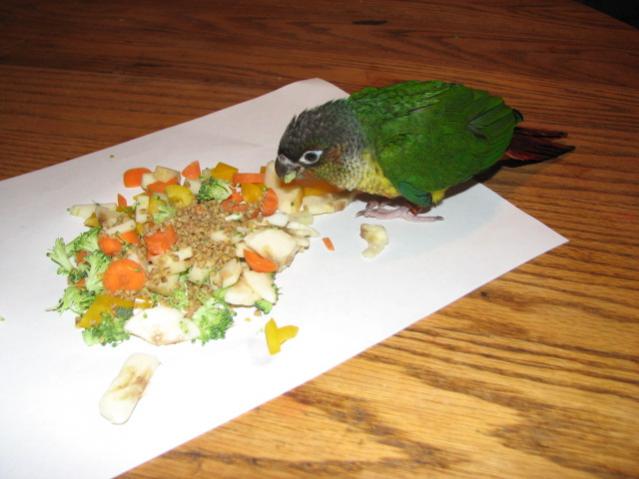
- Grains: Cooked grains such as brown rice, quinoa, and whole wheat pasta can be offered occasionally as part of a balanced diet.

- Nuts and seeds: Offer small amounts of unsalted nuts and seeds as occasional snacks. Nuts and seeds are high in fat, so should be eaten in moderation to prevent obesity.

- Protein: Provide occasional sources of protein such as cooked chicken, boiled eggs, or legumes such as lentils or chickpeas. These foods can add variety to your conure's diet and provide additional nutrients.
- Calcium: Make sure your conure gets enough calcium by offering crushed bones, mineral blocks, or calcium supplements.
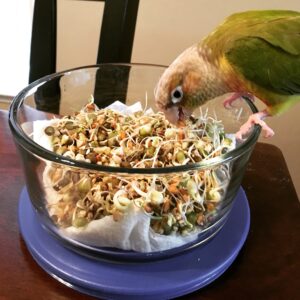
- Water: You should always have fresh, clean water available for drinking and bathing. Change the water daily to avoid contamination.

Remember to monitor your Connor's diet and adjust as needed based on his preferences, activity level and overall health. It is also important that they avoid foods that are high in salt, sugar, caffeine or are toxic to birds, such as avocados, chocolate and alcohol. Offering a varied and nutritious diet will help keep your green-cheeked conure happy and healthy.
Toxic To Green-cheeked conures:
Like all parrots, green-cheeked conures are sensitive to various substances that can be toxic to them. Here are some common things that are toxic to green cheeks:
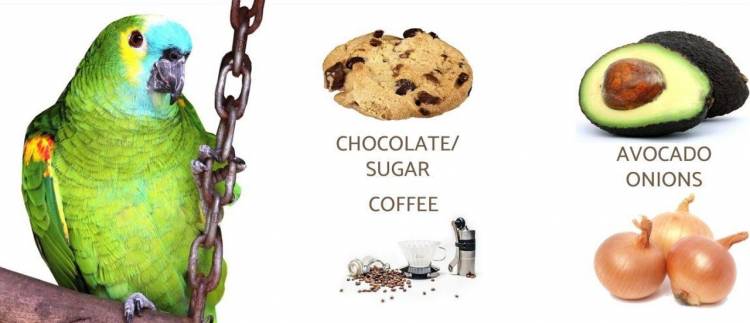
How to look after a Green Cheek Parrot Download GUIDE
List of Toxic Food
- Avocado: Avocados contain a substance called persan, which is toxic to birds and can cause respiratory distress, heart failure, and death.
- Chocolate: Chocolate contains theobromine and caffeine, which are harmful to birds and can cause vomiting, diarrhea, seizures and death.
- Alcohol: Alcohol is toxic to birds and can cause central nervous system depression, respiratory problems, and death.
- Caffeine: Caffeine is found in coffee, tea, energy drinks and some sodas. It can cause hyperactivity, rapid heartbeat, tremors and death in birds.
- Onions and garlic: Onions and garlic contain compounds that can damage the bird's red blood cells, leading to anemia and weakness.
- High-fat foods: High-fat foods, such as fried foods, fatty meats, and oily seeds, can lead to obesity, liver disease, and other health problems in birds.
- Moldy Foods: Loose or spoiled food contains toxins that are harmful to birds and can cause digestive upset, respiratory problems and other health problems.
- Household cleaners and chemicals: Many household cleaners and chemicals contain toxic ingredients that can be harmful to birds if inhaled or ingested.
- Lead and zinc: Lead and zinc are toxic metals found in some household items, such as paint, jewelry, and hardware. Even small amounts of lead or zinc can be fatal to birds.
- Insecticides and Pesticides: Insecticides and pesticides used in and around the home can be toxic to birds if ingested or inhaled.
It's important to be mindful of the environment and objects your green cheeks have access to, and to keep them away from anything that could potentially harm them. If you suspect your bird has ingested something toxic or is showing signs of illness, seek veterinary care immediately.
Habitat:
Green-cheeked conures are native to South America, where they live in forests, woodlands, and savannas. In captivity, they need a spacious cage with plenty of toys for mental stimulation and exercise.
- Forest

- Woodland

- savannas (grasslands)
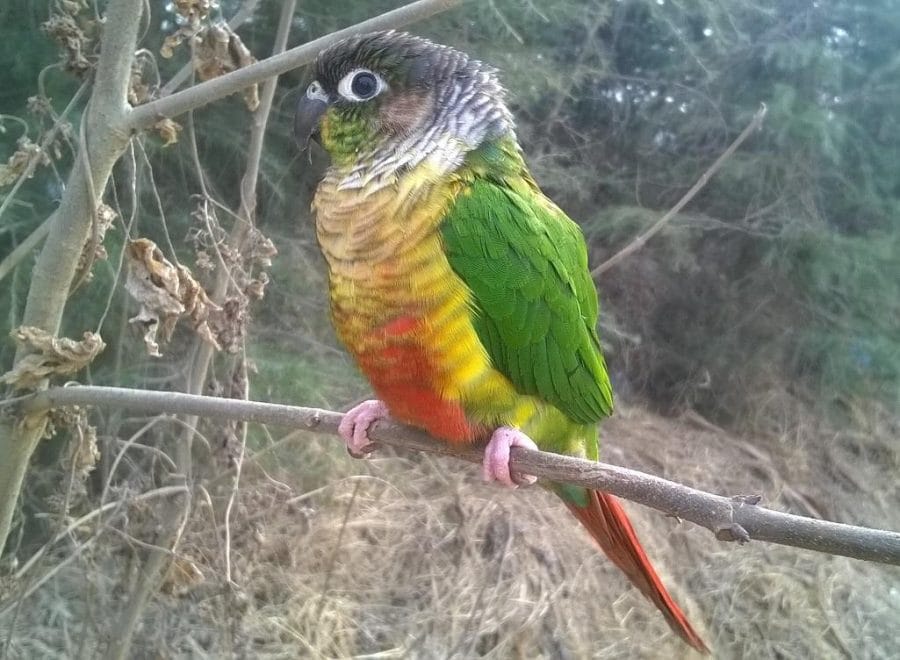
- Cage
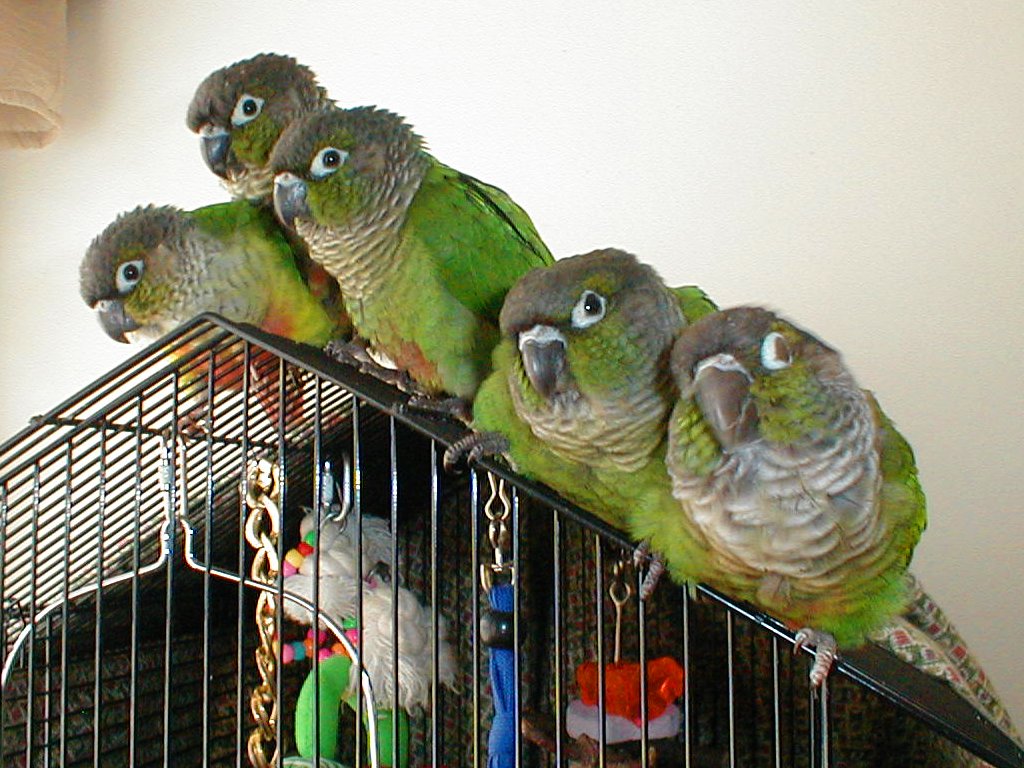
- captivity
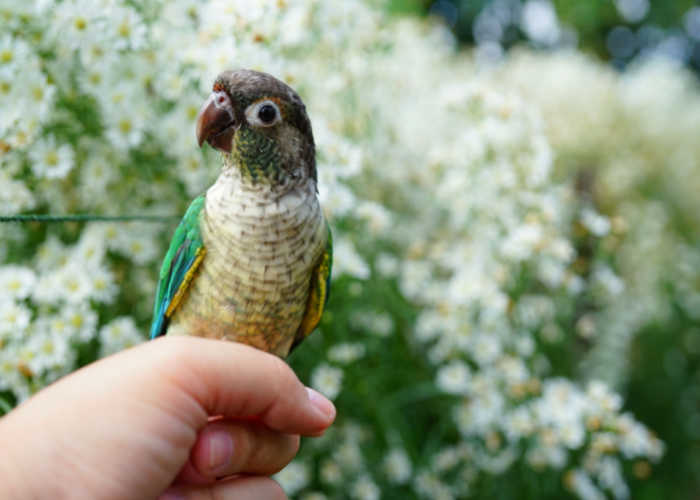
Lifespan:
With proper care, green-cheeked conures can live 15 to 20 years or more in captivity.
Socialization:
These birds are social creatures and enjoy the company of both humans and other birds. They can become lonely or develop behavioral problems if left alone for long periods of time.
Noise level:
Although they are not as loud as some other parrot species, green-cheeked conures can still be noisy, especially during the early morning and evening hours or when excited.
Health Concerns:
Like all pet birds, green-cheeked conures are prone to certain health problems such as psittacosis, beak and feather disease, and malnutrition. Regular veterinary check-ups and a nutritious diet are essential for their health.
How to care , green-cheeked conures:
Caring for a green-cheeked conure includes meeting their physical, mental and emotional needs. Here is a comprehensive guide to caring for these delightful birds:
- Housing: Provide a spacious cage that allows your green-cheeked conure to roam freely and spread its wings. The cage should be made of non-toxic material and the bars should be placed close enough to prevent escape. Include sheets of different sizes and textures, as well as toys for mental stimulation and exercise.

- Diet: Offer a balanced diet that includes high-quality grains, fresh fruits, vegetables, and occasional snacks. Avoid foods that are high in salt, sugar, caffeine, or are toxic to birds.
- Socialization: Green-cheeked conures are social birds and thrive on interaction with their human companions. Spend time playing, talking and bonding with your Kunur every day. If you can't provide constant companionship yourself, consider getting your bird a companion.

- Exercise: Give your green-cheeked conure plenty of opportunities to exercise outside of his cage. Time outside the cage in a bird-proof area of your home allows your conure to spread his wings, explore and play.

- Grooming: Trim your conure's nails and feathers as needed to prevent injury and make sure they can move comfortably. Provide your bird with bathing opportunities to help maintain healthy feathers and skin, such as washing with a shallow bowl of water or a spray bottle.

- Veterinary Care: Schedule regular checkups with an avian veterinarian to monitor your conure's health and address any potential problems as soon as possible. Continue vaccinations and deworming as recommended by your doctor.

- Environment: Keep your conifer's environment clean and free of hazards. Clean the cage regularly and remove any soiled bedding, uneaten food, or grime. Monitor temperature and humidity levels to ensure they are within the appropriate range for your bird's comfort.

- Training: Train your green-cheeked conure using positive reinforcement techniques to encourage good behavior and discourage unwanted habits. Teach basic commands, such as stepping on your hand, and provide mental stimulation through puzzle toys and training sessions.
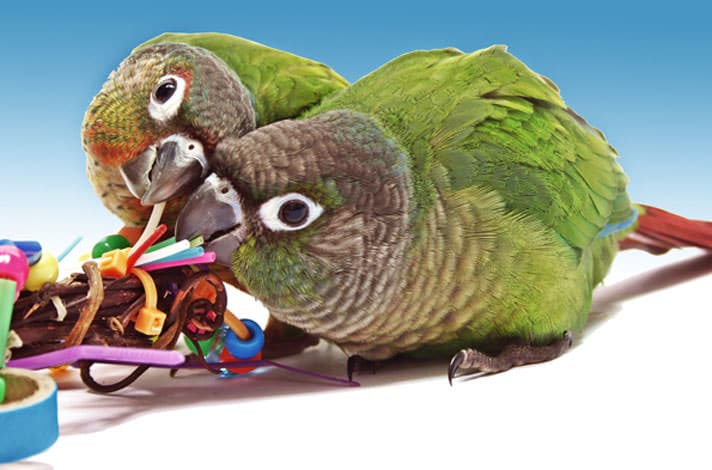


- Attention and affection: Green-cheeked conures form strong bonds with their human companions and need regular attention and affection to thrive. Spend quality time interacting with your canine every day, and show them love and affection through gentle handling, scratches and cuddles.
By providing a nurturing and enriching environment with proper care and attention, you can ensure that your green-cheeked conure lives a happy, healthy and fulfilling life as a beloved member of your family.
Legal Considerations:
Before acquiring a green-cheeked conure as a pet, it is important to check local regulations regarding ownership and any permits that may be required.
Breeding’s green-cheeked conure:
Breeding green-cheeked conures can be a rewarding but complex process that requires careful planning and preparation. Here are some important steps and considerations for breeding green-cheeked conures:
- Mating: Select healthy, mature males for breeding. Genetically unrelated birds must be paired to avoid inbreeding. Introduce breeding pairs slowly and monitor their interactions to ensure compatibility.
- Nesting box: Provide a suitable nesting box in the breeding aviary. The nest box should be large enough for the female to enter comfortably and contain nesting material such as wood shavings or shredded paper.
- Food and Nutrition: Make sure to get a balanced diet rich in nutrients needed for breeding. Fill their diet with fresh fruits, vegetables, and sources of calcium to support egg production and chick development.
- Breeding season: Green-cheeked conures usually breed during the spring and summer months. Mimic natural daylight cycles by providing 10-12 hours of light per day to stimulate breeding behavior.
- Courtship and Mating: Monitor the breeding pair for signs of courtship behavior, such as mutual predation, regurgitation, and increased vocalization. Once mated, the female will lay eggs within a few days.
- Incubation: The female incubates the eggs for about 23 to 25 days. Make sure the nest box is undisturbed during this time to minimize stress and disturbance.
- Chick rearing: After the eggs hatch, both parents will take turns feeding and caring for the chicks. Provide a nutritious diet for the breeding pair to support the growth and development of the chicks.
- Weaning: The chicks will fledge and leave the nest at 6-8 weeks of age. Monitor their progress closely and gradually introduce solid foods as they transition to independent feeding.
- Health Care: Monitor breeding pairs and chicks for signs of illness or distress. If any health problems develop, seek veterinary care immediately.
- Responsible Breeding: Only breed green-cheeked conures if you have the resources, knowledge, and commitment to care for the chicks and find them suitable homes. Avoid overbreeding and contribute to conservation efforts by supporting reputable breeders and conservation programs.
Green-cheeked conures require careful attention to their physical and behavioral needs during the breeding process. By providing a favorable environment and proper care, you can help ensure successful breeding and healthy offspring.
Types and colors of Green-cheeked conures parrots:
Green-cheeked conures (Pirahara mollini) are known for their vibrant plumage and come in a variety of color variations, each with its own unique appearance. Here are some common color variations and types of green cheeks:
- Common or wild type: The wild-type green-cheeked conure has a predominantly green body with a dark brown-red forehead and crown, blue primary flight feathers, and a maroon tail.
- Cinnamon: Cinnamon green-cheeked conures have a lighter, more muted color than the wild type. The green wings have a cinnamon brown tint, and the red on the head may be lighter or more subtle.
- Pineapple: Pineapple green-cheeked conures have a combination of yellow and green feathers on their bodies, which resemble the colors of pineapples. Some red color may remain in the head, but it is often lighter than the wild type.
- Turquoise: The turquoise-cheeked conure has a bluish-green body color, varying in intensity. The red forehead and crown are usually lighter or absent, and the blue flight feathers may be more prominent against the turquoise body.
- Yellow-sided: Yellow-sided green-cheeked conures have vibrant yellow on the sides, which contrasts with the green body. Red on the head may be reduced or absent, and the overall appearance is colorful and striking.
- Cinnamon Turquoise: This mutation combines cinnamon and turquoise colors, resulting in a bird with cinnamon brown feathers and a blue-green body.
- Yellow-sided Turquoise: Similar to the yellow-sided mutation, but with the addition of turquoise on the body, creating a visually stunning combination of yellow, green, and blue.
- Thin: Thin green-cheeked conures have a lighter overall coloration, with muted green feathers and less intensity of red and blue pigments. They may appear softer or pastel in color than the wild type.
These are the most common color change and green cheek varieties available in the pet trade. Each mutation has its own unique beauty, and color preferences may vary among bird enthusiasts. When choosing a green-cheeked conure, consider the color variation that appeals to you most and make sure the bird is healthy and well-cared for by a reputable breeder or seller. is the giver.
Pricing:
The price of a green-cheeked conure can depend on several factors, including the age of the bird, color change (if any), reputation of the breeder, location, and whether the bird comes with any additional accessories or services.
- Standard Green-Cheeked conure: In general, a standard Green-cheeked Conor with no significant color change can range from $150 to $400 USD.
- Color Variations: Green-cheeked conures come in different color variations, such as cinnamon, pineapple, turquoise, and yellow. These variations can affect the price, with rarer variations usually leading to higher prices. Expect to pay $200 to $600 USD or more for color changes.
- Hand-fed vs. Parent-Raised: Hand-fed chicks, which have been raised by humans from a young age, are more expensive than parent-raised chicks. Hand-fed green-cheeked conures can range from $250 to $600 USD or more, depending on factors such as color variation and the reputation of the breeder.
Buying where?- Green-cheeked conures ?
You can buy green rhubarb from a variety of sources, including:
- Popular avian breeders: Look for breeders who specialize in green-cheeked conures and have a good reputation for breeding healthy, well-socialized birds. You can find breeders through online directories, avian clubs, or by asking other bird owners for recommendations.
- Avian Specialty Stores: Some pet stores specialize in birds and may have green-cheeked conures. Be sure to choose a store with a clean and well-maintained bird section, and inquire about the bird's background and care.
- Avian Rescue and Adoption Centers: Consider adopting a green-cheeked conure from a rescue or adoption center. Many birds in rescue are looking for loving homes, and adoption can be a rewarding experience. Check out local animal shelters, bird rescues and adoption websites online.
- Avian Expos and Shows: Bird expos and shows often feature vendors selling bird species, including green-cheeked conures. These events can be a great opportunity to meet breeders, see different species of birds up close, and ask questions about care and ownership.
- Online Marketplaces: There are online marketplaces where you can find green-cheeked conures for sale, but be careful and research the seller thoroughly before making a purchase. Make sure the welfare of the birds is a priority and that the seller has a good reputation for ethics.
- Additional Resources:
- Association of Avian Veterinarians: https://www.aav.org/
- American Federation of Aviculture: https://afabirds.org/2018_WordPress/
- Parrot Society of Australia: https://www.parrotsociety.org.au/
Remember, getting a green-cheeked conure is an important decision. By carefully considering the ethical implications, thoroughly researching their needs, and choosing a responsible source, you can ensure the well-being of both you and the bird.
Overall, green-cheeked conures make delightful and entertaining pets for those who want to give them the attention, care and enrichment they need.
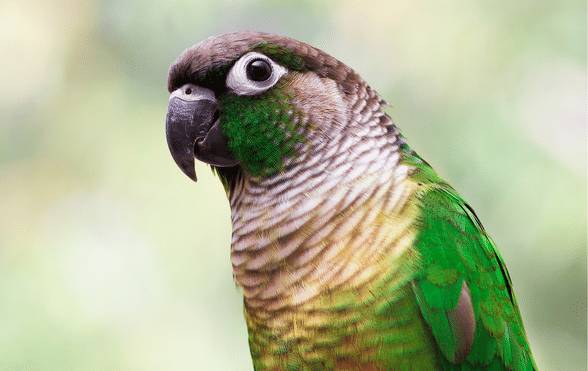
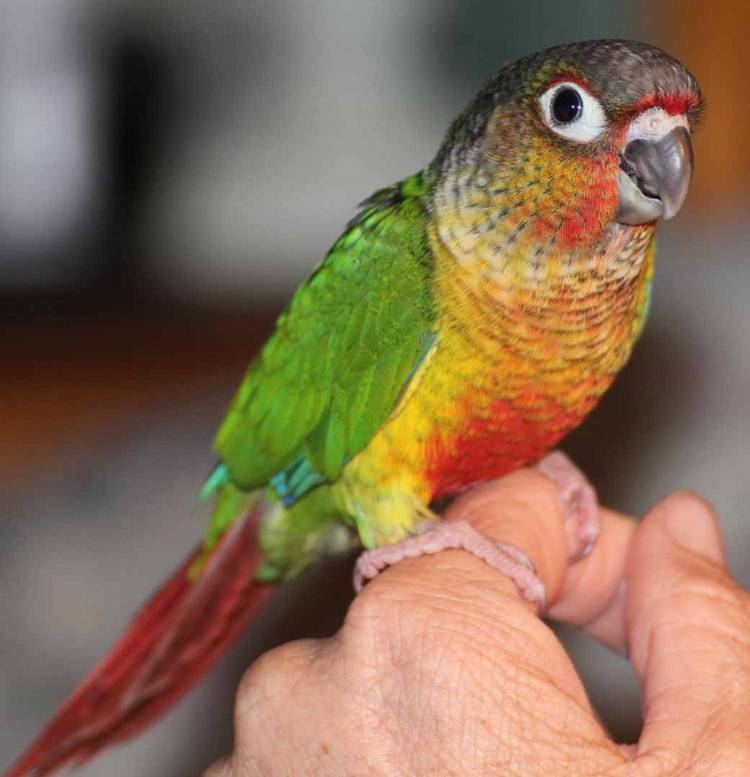
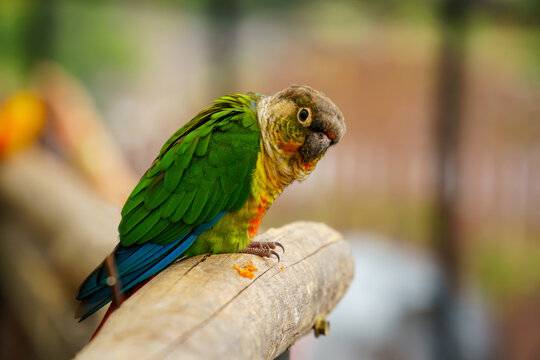
:strip_icc()/tasty-nutritious-treats-for-your-bird-390629_Final-5bcf147ec9e77c00519ba8ec.png)
